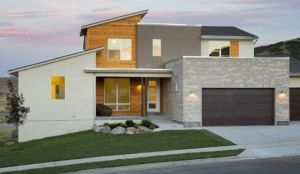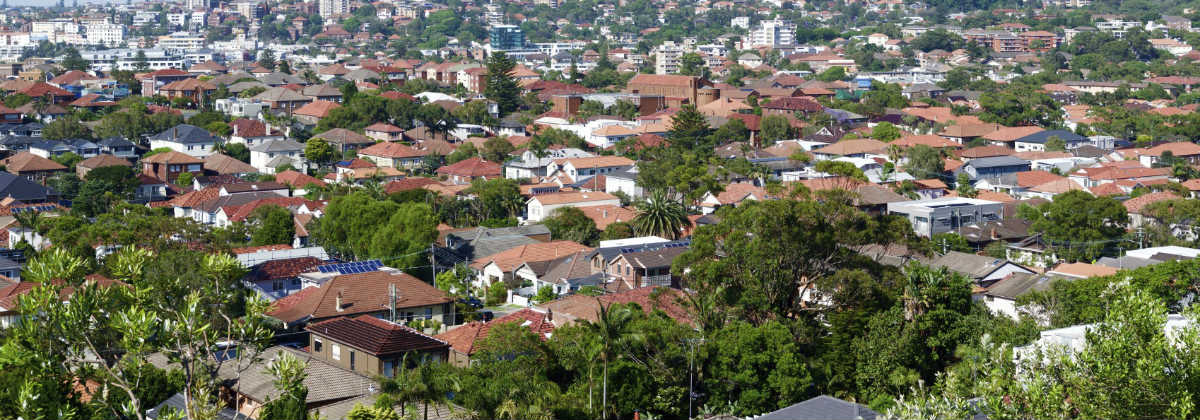We all know that some appliances are more energy-efficient than others, and that greater efficiency equals less money spent on your electricity bills down the track. But have you ever considered not just having efficient appliances, but an efficient house?
Many innovators and homeowners around the world have created homes that make use of unusual designs and construction to be as efficient as possible – one of them even has a daily net energy usage of zero. So, how did these homes become so energy-efficient and what can we learn from them? In this article, Canstar Blue runs you through what makes a home energy efficient and walks you through some of the most-energy efficient homes in the world and the techniques they use to achieve this feat.
What is an energy efficient home?
An energy efficient home effectively reduces its greenhouse gas emissions by opting for more renewable energy sources within the home and using materials that take advantage of the surrounding climate. They are designed to use as little energy as possible by limiting energy wastage and using materials and design patterns that can retain the heating and cooling requirements of the climate in a specific location. Energy efficient housing designs have slowly become more and more popular around the world as means for home-owners to save money and be as green as possible.
The most energy efficient home designs around the world
The Zero Home – United States
 The Zero Home is the brainchild of Garbett Homes (a property developer) and Vivint (a smart home tech company), that got its name owing to the fact that, at the end of each day, the amount of energy it has used and expended end up cancelling each other out. This means this home has an effective energy use of zero, reportedly costing the homeowner around only $300 a month for utilities. The bulk of the home’s energy comes from its 40 solar panels, which generate 10 kilowatts of electrical power per day. In addition to its solar panels, its incredible efficiency is said to come from new construction materials, improved building practices, and high-tech infrastructure components, plus roof-mounted solar panels, tankless water heaters, a new type of HVAC (heating, ventilation and air conditioning) system, and a host of ultra-efficient household appliances.
The Zero Home is the brainchild of Garbett Homes (a property developer) and Vivint (a smart home tech company), that got its name owing to the fact that, at the end of each day, the amount of energy it has used and expended end up cancelling each other out. This means this home has an effective energy use of zero, reportedly costing the homeowner around only $300 a month for utilities. The bulk of the home’s energy comes from its 40 solar panels, which generate 10 kilowatts of electrical power per day. In addition to its solar panels, its incredible efficiency is said to come from new construction materials, improved building practices, and high-tech infrastructure components, plus roof-mounted solar panels, tankless water heaters, a new type of HVAC (heating, ventilation and air conditioning) system, and a host of ultra-efficient household appliances.
Naugler House – Canada
Dubbed as the ‘most energy efficient home in New Brunswick’, the Naugler House is believed to cost its owners a shocking low $77 a year in heating costs. Using a ‘Passive House’ design, Naugler House is designed to keep the harsh chill of New Brunswick out with its airtight building structure, thick walls and solid windows and doors. This house also utilises large windows on each floor, to let in natural light, voiding the need for additional lighting during most of the day. These windows also aid in providing free heat, thanks to the additional sunlight. Passive Houses, like Naugler House, are slowly becoming more popular in cooler climates, thanks to its emphasis on the design of a thermal envelope – essentially constructing an outer shell or exterior on the home which can withstand harsh climates and weather elements.
West Kirby Eco Home – United Kingdom

Designed by architect Colin Usher for him and his wife to live in, The West Kirby Eco Home was made with the goal of keeping energy bills as low as possible. The home makes use of a number of efficiency features, including solar panels, a huge amount of insulation, heat-retaining concrete walls, triple-glazed glass, and a high-tech heat pump which takes heat from the outside air and sends it through the house. The main goal of the design was to maintain a constant heat in the home throughout the year, and most of the efficiency-oriented features are geared towards that goal. My Usher’s reasonably confident that his design worked, claiming they pay around 15 quid for a year’s worth of energy for heating, lighting, cooking and hot water.
10 Star Home – Australia
The first residence to score a 10-star energy rating in Victoria, the 10 Star Home is a carbon-positive, four-bedroom home with a no waste philosophy. Using passive solar designs, cross-flow ventilation, thermal mass concrete floors and heavy-duty insulation, this home is able to self-heat and cools as required, voiding the need to pay of these utilities. Conceived and constructed by design and build company Social Weaver, the 10 Star Home also voided waste where possible during the build, opting for non-toxic materials and products and reducing packing from suppliers. The 10 Star Home is located in Cape Peterson, a windy seaside village in South Gippsland, Victoria.
Washington Eco Home – United States
Constructed by American Dennis Kaech, this Washington eco home takes a unique approach towards energy-efficiency. Using a large rock wall next to the house, this eco home is able to captures solar rays and heat within the day, to then be released back into the house in the evening, voiding the need for additional heating sources. This design idea is also carried out through the living room of the home, where a concrete box holding more than four tonnes of rock underneath the floor serves a similar purpose. In addition to using these heating methods, Kaech also uses solar panels, passive heat storage and layered insulation and sub-paneling to help reduce the need for additional electricity in the home.
The Barn House – United Kingdom

This Hampshire property is just one of a very small number of homes in the UK to achieve an Energy Performance Certificate A Rating. Costing just £3 a day to run, The Barn House pulls energy from the ground it stands on by way of a ground-source heat pump, and makes use of photovoltaic solar panels to generate electricity and heat water. Practically its own little eco-system, this home is capable of processing and recycling sewage using a bio-digester. On top of that, it has a number of underground tanks which collect rainwater for reuse.
8.4 Star Cottage – Australia
Created by founding director of Adelaide-based sustainable design studio TS4 Architects, Paul Hendy, the 8.4 Star Cottage is a pinned as a ‘climate-responsive’ home. Converted from an original 1904 cottage, this home uses thermal mass, and an automation system to help move and shift the air within them home, making it easier for heating or cooling to spread throughout the premise efficiently. The 8.4 Star Cottage is reportedly the first home in Australia to install a thermodynamic hot water system, which essentially uses air to heat and cool the water, as opposed to electricity or gas. In addition to efficient heating and cooling, this home is also equipped with a 5.2-kilowatt solar system on the roof. You can find the 8.4 Star Cottage in Beulah Park, Adelaide.
How much does it cost to build an energy efficient home in Australia?
According to Real Estate.com, it can cost upwards of $300,000 to build an energy efficient or eco home in Australia. Energy efficient homes will generally cost homeowners more per square meter to build than a regular house, but these costs will generally be made back in the long term, thanks to the thermal stability, good lighting and of course, energy efficiency that these houses have.
What can I do to make my home more energy efficient?
There are several ways to make a home more energy efficient. Probably the most common and easiest ways to do so (depending on your budget of course) would be purchasing energy efficient appliances, installing solar and battery systems and properly insulating your house. If you’re keen to get started, check out our full list of tips and tricks to make your home more energy efficient.
But, if you don’t plan on taking your house completely off the grid just yet, it may also be worth looking into an energy provider that’s on the greener side, or at the very least, perhaps a little cheaper. Compare which electricity providers in your area could help you boost up your home energy efficiency below.

Share this article